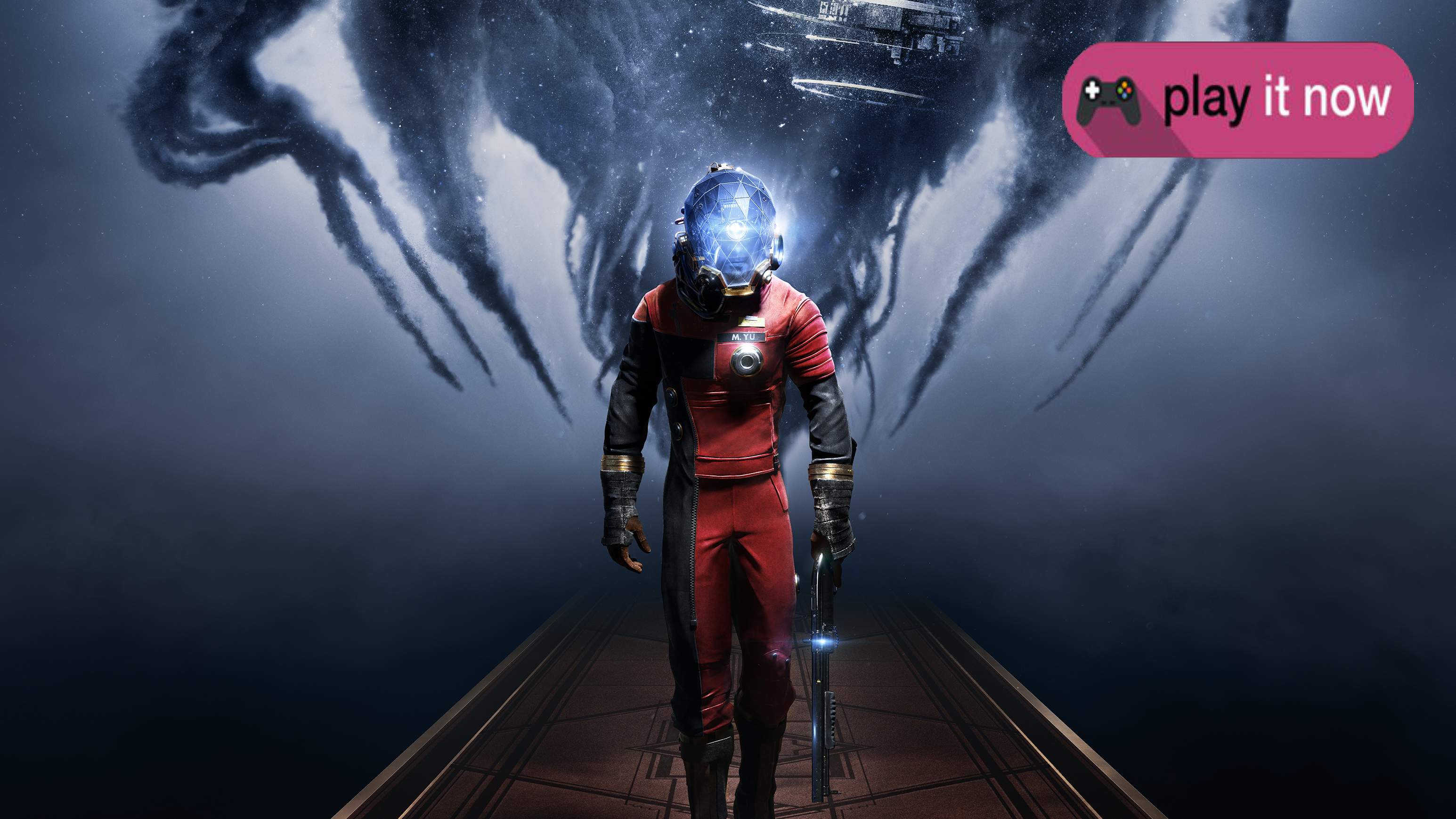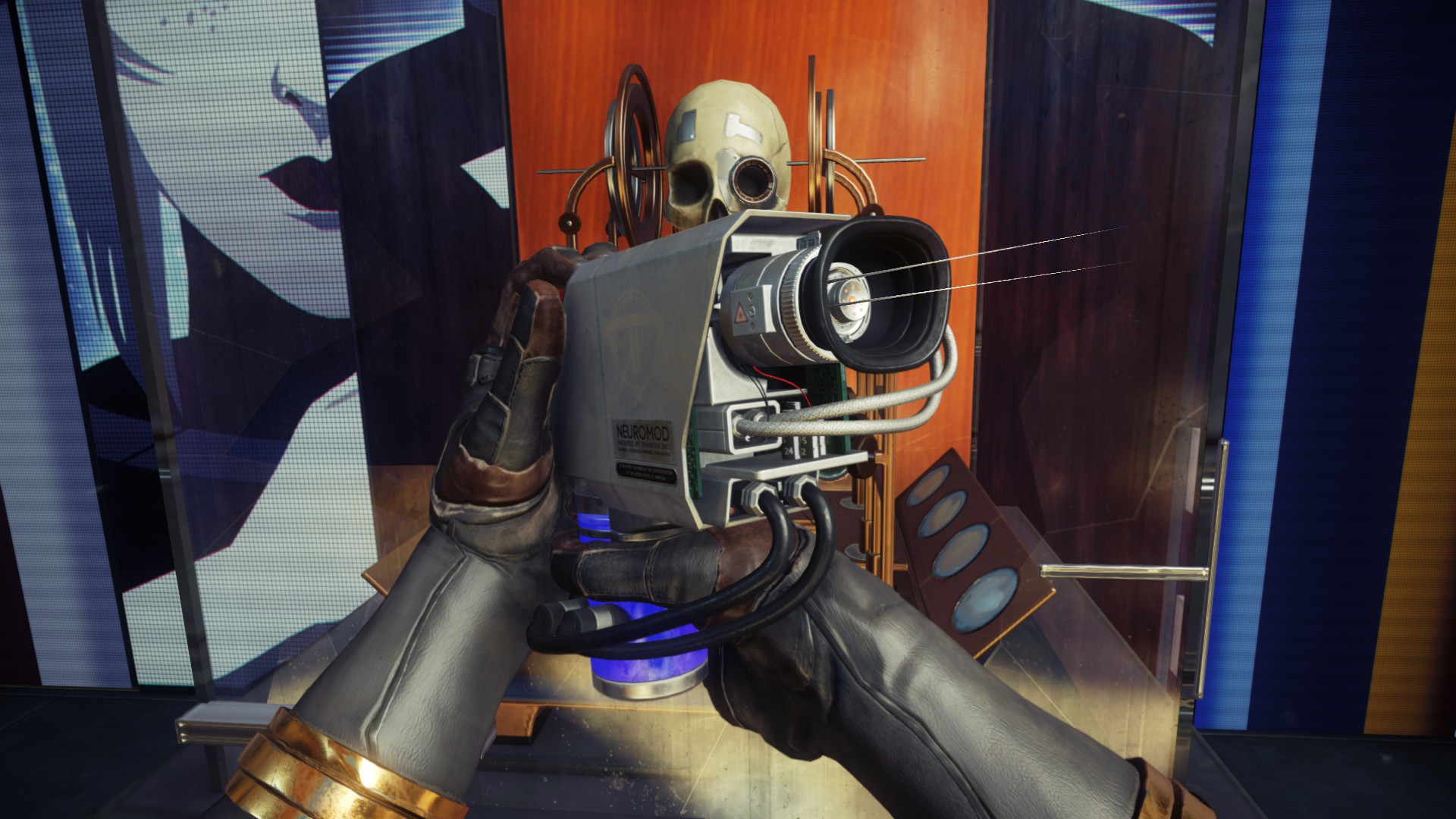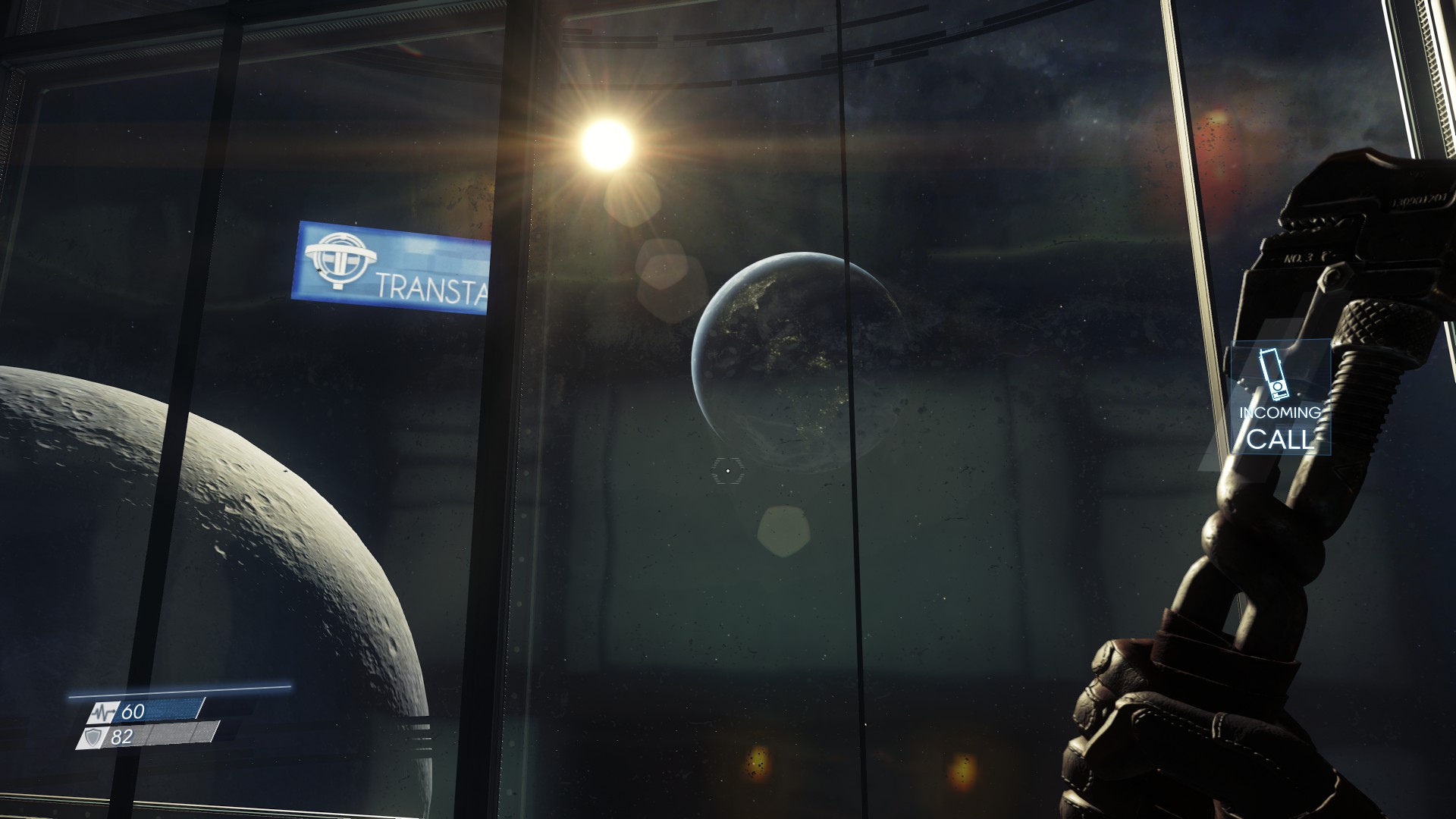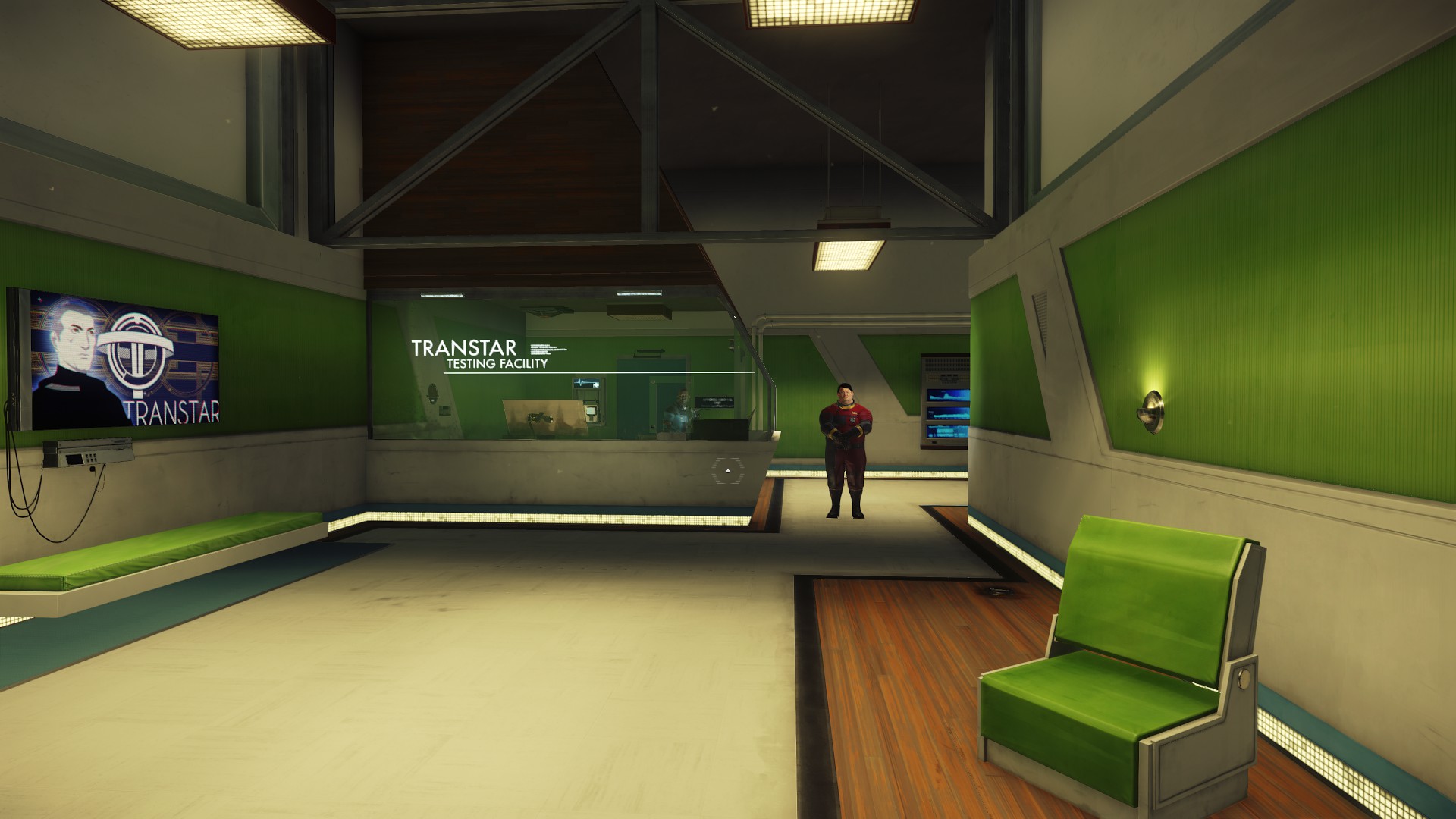Prey review
A game that makes you the hunter and the hunted

In Arkane’s smart and stylish revival of the 2006 first-person shooter, the moon-orbiting Talos 1 space station is being overrun by Typhon, a shape-shifting collective of aliens. It’s up to your character, Morgan Yu, to fight back by any means necessary. However, your goal is just as much about finding a motive worth fighting for.
Is there anyone left to save? Can I actually make a difference? And why am I in the middle of it all? These are all questions that you’ll answer with your actions, or at least try to, throughout the roughly 20 hour campaign.
For some gamers, a gun in-hand is reason enough to truck through to the game’s end. Prey is an action game, after all, so it wastes little time rolling out a pistol, wrench and shotgun, as well as a few other futuristic weapons, like the GLOO gun that freezes enemies in their tracks.
But if you’re looking for more depth in your FPS games, it’s not too difficult to find it here. Prey features a large skill tree filled with fun, upgradeable abilities that will make your trek feel dynamic and fresh, no matter your style of play.
Mixed in with the balance gunplay and supernatural abilities, players can further mix up their strategy by crafting items to build up your offense against the Typhon.
Unlike games like Arkane’s own Dishonored, and BioShock, you aren’t delivered an ending based on your level of violence or lack thereof. The multiple endings hinge on some big decisions you make throughout the story, both in the main quest and in how you handle many of its sidequests.
While Prey is a solid offering on almost all accounts, it misses the mark in a few areas. While performance on the PC was rock-solid, the clumsy melee combat controls never really seem to jive with the hectic movement of the Typhon creatures. And its story, which concludes majestically, takes a little too long to find its groove and misses a beat from time to time.
Talos 1 is so detail-packed that you’ll probably want to squeeze every drip out of it, but the game frustratingly steps on its own toes at times. For example, it’s all too easy to become overwhelmed with quest objectives that have you zipping around the environment faster than you can memorize its layout.
Also, character dialogue will sometimes overlap with audio logs, which essentially makes you miss out on two potentially important bits of story at once and is a little immersion-breaking for the serious atmosphere that Arkane has made.
All said, if you’re a fan of FPS games and enjoy a sci-fi setting, Prey is a must-play. But for the more discerning player, those few minor flaws might stand in your way of total enjoyment.
The tale on Talos 1
Prey is, more or less, an open-world game. As you explore Talos 1 on foot (and outside of it in glorious microgravity), you’ll come across new quests to take on and be treated to many bits of environmental storytelling and collectable lore in the form of notes and audio logs.
If you look and listen closely, you’ll notice the excellent narrative details put into the game, which paints a humanizing (or sometimes, dehumanizing) picture of life on the space station just before, and as, shit hit the fan with the Typhon invasion.






Prey has many layers to its narrative, but mostly leaves it up to you to peel them all back. It’s a shame that some of its more memorable beats are hidden away, but at least it gives you all the more reason to go back through the journey a second time.
Speaking on the bigger moments in the story that you can’t help but see play out in front of you, many of them unfold exactly as you’d expect. Thankfully, a few big curve balls tossed in along the way really help to avoid being fatigued by familiarity.
Attack and release
A few things are made very clear from the start of the game: you are outnumbered and outmaneuvered by the Typhon.
Ranging from the small, Half-Life headcrab-like Mimics, to the intimidating bipedal Phantoms (and a few others that I won’t spoil for you), the struggle is made just a little more bearable by knowing each enemy’s weakness, discoverable by scanning it with the Psychoscope a la Metroid Prime.
Equipped with this intel, finding the ideal mix and match of assault combos for each enemy type is endlessly satisfying. For most of the beasts, applying some motion-freezing GLOO, followed by some wrench action yields decent results. At best, you’ll lose little health and waste almost no resources in the process.
Speaking of resources, Prey features a robust inventory management system that’s actually a lot of fun to use. The remains of slain Typhon, as well as other scraps and abandoned tech can be salvaged for raw materials for use in crafting items like ammo, medkits and other things that are rare to come by during play, especially in the game’s tough later sections.
That said, there certainly are some encounters that call for the boomstick. And even though you aren’t punished for brute forcing your way through the game, the style of play that yielded the best results involved taking a moment to consider how each battle would affect my resources on hand. There’s nothing that I love more than saying hello to a Phantom with a loud gun, but in most cases (as I fail to illustrate below) I valued having a fat stack of reserve materials a little more.
Sign up for breaking news, reviews, opinion, top tech deals, and more.
The power of choice
Neuromods also help you even-out the fight against the Typhon. Shortly after you begin the journey, Morgan can learn new perks with these collectable items that can be used to unlock new abilities and upgrades to your suit’s capabilities.
Want to boost your strength, hack terminals and double your health gauge? Enjoy being stealthy? There’s a perk for that. Additionally, there are chipsets sprinkled throughout the campaign that give your suit some specialized powers, like the ability to see hidden mimics and granting you higher chances of landing critical blows with your favorite weapon, and more.
As such, the skill tree presented here allows for surprisingly deep customization, even allowing Morgan to take on certain traits of the Typhon to gain a considerable edge in combat. Abilities like shape-shifting, teleporting and mind-hacking really broaden the playbook when they become available around halfway through the journey. However, there are some interesting implications at stake for adopting the enemy’s ways.
To hunt and to be hunted
I have a confession to make: it took me a while to not suck at Prey. A common scenario involved being ambushed by a lowly Mimic while it was disguised as a mug. Effortlessly juking around the room, it avoided my every swing of a wrench. Having drained all of my stamina, I realize that I am the prey, owned by the easiest enemy in the game.
While I did become more proficient later on, the wild enemy patterns are tougher to read than they seem. To that end, I appreciate that this game enforces learning through failures and plotting out your attack, even when it’s just a casual encounter with a relatively harmless enemy.
In the end, the harsh, but fair difficulty made applying learned battle tactics to each Typhon encounter during my bleak tenure on Talos 1 one of the more rewarding things I’ve done in a game this year.
Prey is a captivating exploration of how far humans will go to sustain their species, even at the cost of their own lives or others. While it suffers from poor pacing at times and a few quality of life issues, this game more than makes up for it with surprising depth in its story, an incredible atmosphere and an open-ended approach that caters to casual and more hardcore gamers alike.
Arkane has crafted one of my favorite experiences of 2017.
Verdict: Play it now
Prey was reviewed on the PC with code provided by Bethesda.
TechRadar's review system scores games as 'Don't Play It', 'Play It' and 'Play It Now', the last of which is the highest score we can give. A 'Play It' score suggests a solid game with some flaws, but the written review will reveal the exact justifications.

Cameron is a writer at The Verge, focused on reviews, deals coverage, and news. He wrote for magazines and websites such as The Verge, TechRadar, Practical Photoshop, Polygon, Eater and Al Bawaba.